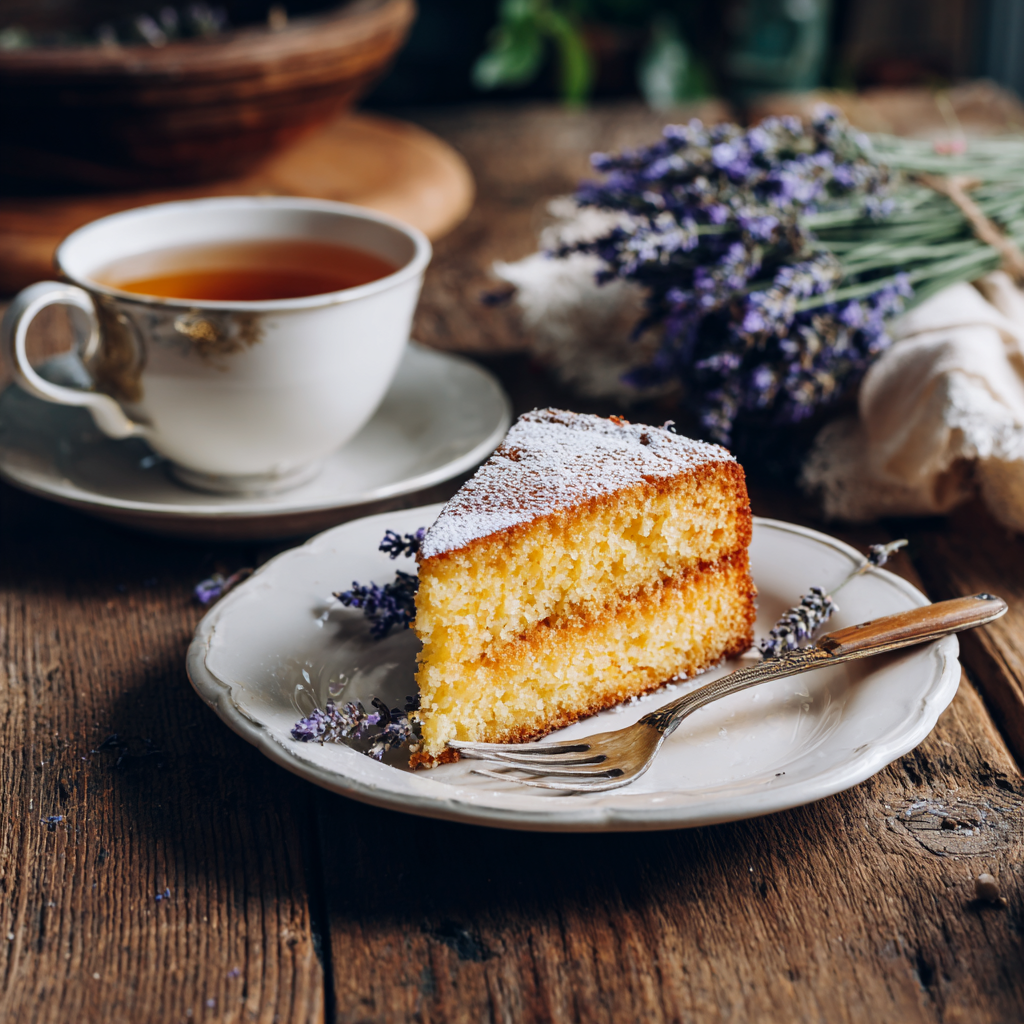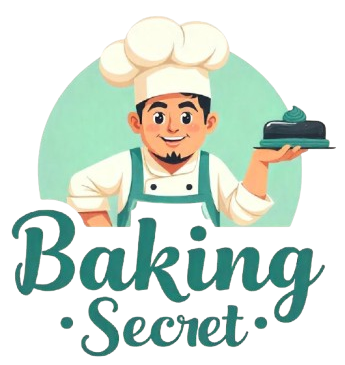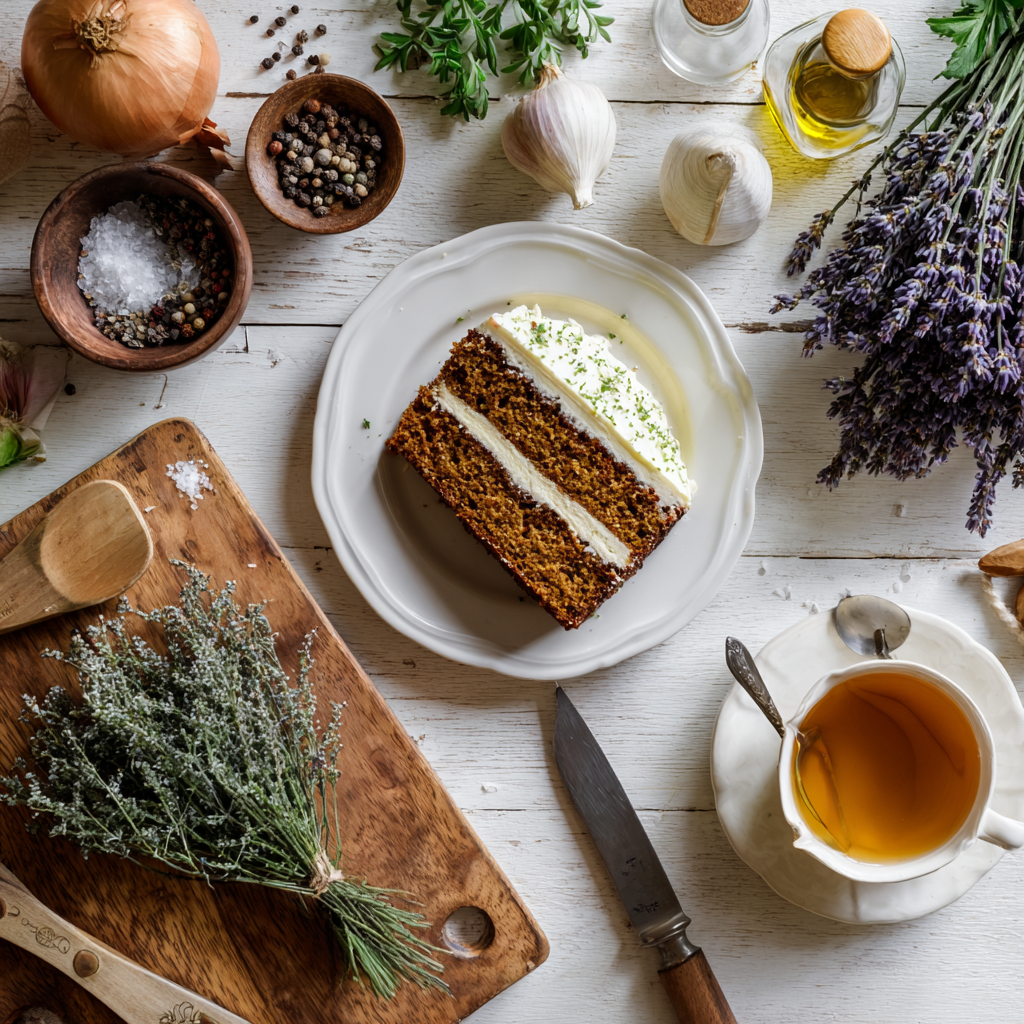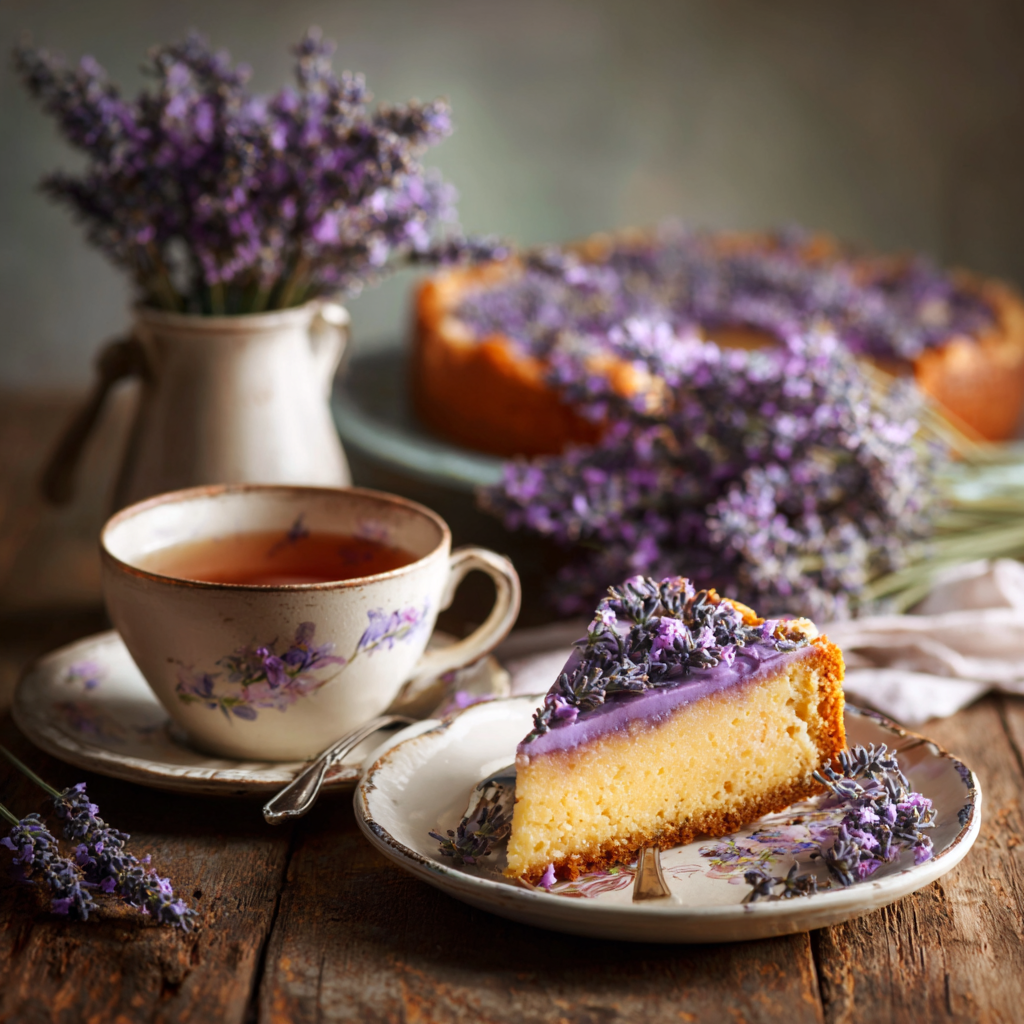Introduction
Baking has always been my happy place. There’s something magical about mixing simple ingredients and watching them transform into something beautiful and delicious. Over the years, I’ve fallen in love with all kinds of cakes, but nothing quite compares to the charm of a vintage cake. These timeless creations are more than just desserts—they’re a piece of history, a dash of nostalgia, and a whole lot of flavor.
So, what exactly is a vintage cake? It’s a cake that harks back to earlier decades, often inspired by recipes and designs from the 1940s, 1950s, or even earlier. Think rich flavors, elegant decorations, and techniques that have stood the test of time. The appeal lies in their simplicity and elegance—qualities that still resonate with bakers and cake lovers today. Whether it’s a classic 1950s cake recipe or a beautifully decorated vintage wedding cake, these cakes bring back memories while feeling refreshingly modern.
Why do people still love vintage cakes? For starters, they evoke a sense of nostalgia. Many of us associate these cakes with family gatherings, old cookbooks, or stories passed down through generations. They remind us of simpler times when baking was an art form and every slice told a story. Today, they continue to inspire bakers around the world, blending the charm of the past with the creativity of the present.
What Makes a Vintage Cake?
To understand what makes a vintage cake, you need to look at its key characteristics. These cakes are defined by their unique flavors, intricate designs, and traditional techniques. Unlike modern cakes, which often focus on bold colors and unconventional shapes, vintage cakes emphasize elegance and simplicity.
- Flavors: Classic combinations like vanilla and chocolate, fruitcake, or spiced cakes dominate this style. Ingredients like buttermilk, molasses, and fresh fruits are staples.
- Designs: Think piped buttercream flowers, lace-like patterns, and layered tiers. A vintage cake illustration often showcases these intricate details.
- Techniques: Hand-mixed batter, hand-piped decorations, and slow-baking methods are hallmarks of this style.
Related terms like 1950s cake recipes highlight the era’s influence on this style. During this time, home bakers perfected recipes that balanced taste and presentation. These cakes weren’t just about feeding a crowd—they were a centerpiece, a conversation starter, and a labor of love.
So, what makes a vintage cake? It’s the combination of timeless flavors, meticulous craftsmanship, and a touch of nostalgia. These cakes aren’t just baked—they’re created with care and tradition in mind.
The Vintage Cake Style Explained
When you think of vintage wedding cakes or retro cakes, certain images come to mind: soft pastel colors, delicate piping, and floral accents. These visual elements define the vintage cake style and set it apart from modern trends. While contemporary cakes often feature bold colors and geometric designs, vintage cakes lean toward understated elegance.
A vintage cake is instantly recognizable by its aesthetic. Imagine tiers adorned with buttercream swirls, fondant bows, or edible pearls. Some designs incorporate rustic touches like naked layers or exposed fillings, blending the rustic cake trend with vintage charm. Others might feature intricate stenciling or hand-painted details reminiscent of a vintage cake illustration.
What is the vintage cake style called? It doesn’t have one specific name, but terms like “retro,” “classic,” or “heritage” often describe it. This style celebrates the beauty of tradition while leaving room for personalization. For instance, a vintage cake stand can elevate the presentation, adding to the overall charm.
Compared to modern trends, vintage cakes feel more personal. They’re less about flashy gimmicks and more about creating something meaningful. This timeless quality is why they remain popular among bakers and cake enthusiasts alike.
Where to Find Vintage Cake Inspiration
If you’re looking to create your own vintage cake, inspiration is everywhere. Start with vintage cake books, which are treasure troves of tried-and-true recipes and design ideas. Titles like “The Art of Vintage Cakes” or “Classic Bakes from the 1950s” offer step-by-step guidance and stunning visuals.
Another great source of inspiration is illustrations. A vintage cake illustration can spark ideas for color palettes, patterns, and decorative elements. Look for prints or digital designs that capture the essence of this style.
For those who prefer hands-on exploration, visit a vintage cake shop. These specialty stores often showcase classic designs and offer expert advice. In Matunga, for example, there’s a quaint shop known for its authentic vintage cakes. Similarly, Karachi boasts a few hidden gems where bakers keep the tradition alive with locally inspired twists.
Here are a few places worth checking out:
- Matunga: Visit the charming vintage cake shop tucked away in this bustling neighborhood. Their signature fruitcake is a must-try.
- Karachi: Explore local bakeries offering vintage cakes Karachi locals rave about. Look for shops with hand-painted signage and classic decor.
Whether you’re flipping through a book, admiring an illustration, or stepping into a shop, inspiration for vintage cakes is all around. All it takes is a little curiosity and a lot of imagination to bring these timeless creations to life.
Baking Your Own Vintage Cake
Now that we’ve explored where to find inspiration for vintage cakes, let’s dive into the fun part—actually baking one. I still remember the first time I tried my hand at a 1950s cake recipe. It was a simple vanilla sponge with buttercream frosting, but something about following those old-school instructions made me feel like I was channeling Betty Crocker herself. Funny enough, it wasn’t just about the taste—it was the process that hooked me.
Recreating classic recipes is easier than you might think. Start by sourcing authentic vintage cake books, which often include step-by-step guides and ingredient lists that transport you back in time. These recipes rely heavily on pantry staples like flour, sugar, eggs, and butter, making them beginner-friendly. One pro tip? Don’t skip the buttermilk—it adds a subtle tang that modern cakes often lack. And if you’re feeling adventurous, try incorporating flavors like almond extract or orange zest, which were all the rage back then.
By the way, presentation matters just as much as flavor when it comes to vintage wedding cakes or any retro creation. A vintage cake stand can elevate your dessert from homemade to heirloom-worthy. I stumbled upon an antique shop last year and found this gorgeous porcelain stand with floral etchings. It’s become my go-to for showcasing everything from birthday cakes to holiday treats. If you don’t have a stand yet, check out local flea markets or online marketplaces—you’d be surprised how affordable they can be.
Rustic elements also play a big role in capturing the charm of a vintage cake. Think about adding touches like exposed cake layers or uneven frosting smears. This style bridges the gap between polished elegance and cozy, homemade vibes. For example, a wedding cake with rustic flair could feature fresh berries cascading down the tiers. These little details remind us that imperfections can be beautiful too.
Popular Themes in Vintage Cake Design
Let’s talk about design. When I think of vintage cake illustration, I picture intricate floral patterns, lace-like textures, and soft pastel hues. These motifs are iconic because they evoke a sense of timeless femininity and grace. Back in the day, bakers used piping bags and spatulas to create these designs entirely by hand—a skill I deeply admire.
Floral patterns, in particular, are a hallmark of the vintage cake style. Roses, daisies, and lilies were popular choices because they symbolized beauty and romance. Imagine a tiered cake adorned with buttercream roses in shades of ivory and blush—it’s no wonder couples still choose these themes for their weddings. In fact, some modern bakers even incorporate edible gold accents to give a nod to tradition while adding a touch of luxury.
Here’s the thing: why are vintage cakes so popular today? Beyond their aesthetic appeal, they connect us to our roots. Many people associate these cakes with family gatherings or special occasions from their childhood. They tell stories, evoke emotions, and bring people together. Even younger generations who didn’t grow up with them are drawn to their nostalgic charm. Plus, there’s something comforting about knowing a recipe has stood the test of time.
Spotlight on Unique Vintage Cakes
While classic designs will always have their place, there’s something magical about discovering rare finds within the world of vintage cakes. Have you ever wondered which is the rarest cake? Well, according to food historians, it might just be the fruitcake. Yes, that much-maligned holiday staple actually has a storied history dating back centuries. Properly aged fruitcakes were once considered a luxury item, reserved for weddings and other significant events.
Funny story—I once visited a vintage cake shop in Matunga that specialized in fruitcakes. The owner proudly showed me a recipe passed down through five generations. Each loaf was soaked in brandy for weeks before being baked to perfection. It was unlike any fruitcake I’d ever tasted, rich and moist with a depth of flavor that made me rethink everything I thought I knew about this misunderstood dessert.
If you’re curious about unique styles, keep an eye out for specialty stores like those in Karachi. Vintage cakes Karachi has its own flair, blending traditional techniques with local ingredients. Some shops even offer custom designs inspired by Mughal art, featuring intricate patterns and vibrant colors. These creations are truly one-of-a-kind, proving that the vintage trend isn’t limited to Western influences.
Modern Twists on Classic Favorites
Speaking of blending traditions, let’s chat about how bakers today are putting a fresh spin on retro favorites. Take the bento cake, for instance. Originally inspired by Japanese minimalism, this compact treat has been adapted to fit the vintage cake aesthetic. Picture a small, single-serving cake decorated with delicate piped flowers and tied with a ribbon. It’s perfect for intimate celebrations or gifting.
Another trend I’ve noticed is the rise of thematic cakes that combine nostalgia with novelty. For example, a cotton candy cake might seem ultra-modern, but when paired with vintage-inspired decorations like ruffled fondant or hand-painted details, it takes on a whole new dimension. Similarly, sports enthusiasts might appreciate a basketball cake designed with retro jerseys or team logos from the 1950s.
Ultimately, what makes these updated versions so appealing is their ability to honor the past while embracing the present. Whether you’re baking for yourself or someone else, there’s joy in knowing you’re part of a long-standing tradition. So grab your apron, dust off that old cookbook, and let your creativity shine. After all, every slice of a vintage cake tells a story—and yours is waiting to be written.
Preserving the Legacy of Vintage Cakes
Here’s a thought—why do we bother holding onto old recipes and baking styles when the world is constantly pushing for something new? For me, it’s about more than just keeping traditions alive. It’s about honoring the stories behind them. You see, every vintage cake has a tale to tell. Whether it’s a recipe scribbled in your grandmother’s handwriting or a design inspired by a black-and-white photo, these cakes are like edible time capsules. They remind us where we came from while giving us room to add our own chapter.
I’ll never forget the day I stumbled upon a dusty old vintage cake book at a garage sale. The cover was faded, but inside were pages filled with handwritten notes in the margins—little tweaks and tips that someone had jotted down decades ago. Funny enough, one of the recipes was for a spiced orange cake, which I later discovered was a hit during the 1940s. I baked it that weekend, and let me tell you, the aroma alone transported me back in time. It wasn’t just a dessert—it felt like a hug from the past.
By the way, don’t feel like you have to stick rigidly to the rules when experimenting with these classics. Sure, respect the roots, but don’t be afraid to tweak things here and there. Maybe swap out some sugar for honey or add a splash of espresso to deepen the chocolate flavor. These small changes can make a vintage cake feel fresh without losing its soul. After all, even the bakers of yesteryears were innovators in their own right—they didn’t have Google to troubleshoot their kitchen mishaps!
If you’re lucky enough to live near a vintage cake shop, take the time to visit. There’s something magical about seeing these creations up close. In Matunga, I once met a baker who specialized in reviving forgotten recipes. She showed me how to fold marzipan into a tiered cake, a technique she’d learned from her great-aunt. Meanwhile, over in Karachi, the local vintage cake shops blend traditional British influences with South Asian flavors, resulting in masterpieces like cardamom-infused sponge cakes topped with rosewater buttercream. Honestly, it’s proof that vintage doesn’t mean stuck in the past—it’s a living, breathing art form.
One thing I’ve noticed is how much joy people get from sharing their discoveries. A friend recently sent me a photo of her attempt at a 1950s cake recipe. She’d gone all out, decorating it with piped buttercream flowers and setting it on a vintage cake stand she’d inherited from her mom. Her pride was contagious, and it made me realize how baking these cakes isn’t just about the end product—it’s about connecting with others. So go ahead, bake that retro beauty and snap a pic. Share it with friends, post it online, or simply enjoy it with family. Either way, you’re contributing to the legacy.
Frequently Asked Questions (FAQ)
Q: What is the vintage cake style called?
A: People often refer to it as “retro,” “classic elegance,” or simply “heritage baking.” These terms highlight the timeless appeal and refined simplicity of vintage cakes. Think soft colors, intricate piping, and designs that evoke nostalgia without feeling outdated.
Q: What makes a vintage cake?
A: At its core, a vintage cake combines specific ingredients, techniques, and aesthetics. Classic flavors like vanilla, chocolate, and fruitcake dominate, while hand-piped decorations and layered tiers define the look. Historically, these cakes were crafted with care, using methods passed down through generations.
Q: Which is the rarest cake?
A: While opinions vary, many food historians consider the properly aged fruitcake to be among the rarest. Traditionally soaked in alcohol for months, this cake was once a luxury reserved for special occasions. Today, finding an authentic version can feel like unearthing buried treasure.
Q: Why are vintage cakes popular?
A: Nostalgia plays a huge role. Many associate vintage cakes with cherished memories of family gatherings or celebrations. Plus, their elegant designs offer a refreshing contrast to today’s flashy trends. They’re comforting, meaningful, and undeniably beautiful.
Q: Where can I find vintage cake inspiration?
A: Look no further than vintage cake books, illustrations, or specialty shops. Visiting a vintage cake shop in places like Matunga or Karachi can open your eyes to unique regional twists. Online resources, including websites like cakes and cupcakes guides, are also fantastic for sparking ideas.
Q: How do I decorate a vintage cake?
A: Focus on delicate details like floral patterns, lace textures, or fondant ribbons. Use buttercream to pipe intricate designs or stencil patterns onto the surface. For a rustic touch, leave some layers exposed or smear frosting unevenly for a cozy, homemade vibe.
Q: Can I use modern tools for vintage cakes?
A: Absolutely! While traditional methods relied on hand-mixing and piping, modern tools like electric mixers and silicone molds can save time without compromising authenticity. Just ensure the final result stays true to the classic aesthetic.
Q: Are vintage cakes difficult to make?
A: Not at all! Most vintage cake recipes use simple ingredients like flour, sugar, eggs, and butter. The key lies in patience and attention to detail, especially when it comes to decoration. With practice, anyone can master these timeless creations.
Q: What’s the best occasion for a vintage cake?
A: Any celebration works! From birthdays to weddings, vintage wedding cakes are particularly popular due to their elegance and charm. Even casual gatherings benefit from the nostalgic warmth these cakes bring.
Q: How can I personalize a vintage cake?
A: Add personal touches like custom colors, themed decorations, or family recipes. Incorporating elements like edible flowers or handwritten messages can make the cake uniquely yours while staying true to its vintage roots.
A Final Note
You know, every time I bake a vintage cake, I’m reminded of how powerful food can be. It’s not just about feeding people—it’s about creating moments, reviving memories, and celebrating creativity. So why not give it a shot? Dust off that old cookbook, grab a vintage cake stand, and let your imagination run wild. Who knows? You might just create something that becomes a treasured memory for someone else.
And hey, if you’re ever in doubt, head to a local vintage cake shop or browse global inspirations online. There’s always more to learn, taste, and discover. Happy baking! 🎂

Equipment
- Mixing bowls
- Electric mixer or whisk
- Rubber spatula
- Cake pans (9-inch round)
- Wire cooling racks
Ingredients
- 2 cups all-purpose flour
- 1.5 cups granulated sugar
- 0.5 cup unsalted butter, softened
- 1 cup buttermilk
- 3 large eggs
- 1 teaspoon vanilla extract
- 1 teaspoon baking powder
- 1 teaspoon baking soda
- 0.5 teaspoon salt
Instructions
- Preheat the oven to 350°F (175°C).
- Grease and flour two 9-inch round cake pans.
- In a large mixing bowl, cream the softened butter and sugar until light and fluffy.
- Add eggs one at a time, mixing well after each addition.
- Stir in the vanilla extract.
- In another bowl, combine the flour, baking powder, baking soda, and salt.
- Gradually add the dry ingredients to the butter mixture, alternating with buttermilk.
- Mix until just combined; do not overmix.
- Pour the batter evenly into the prepared cake pans.
- Bake in the preheated oven for 25-30 minutes or until a toothpick inserted in the center comes out clean.
- Allow the cakes to cool in the pans for 10 minutes before transferring to wire racks to cool completely.


